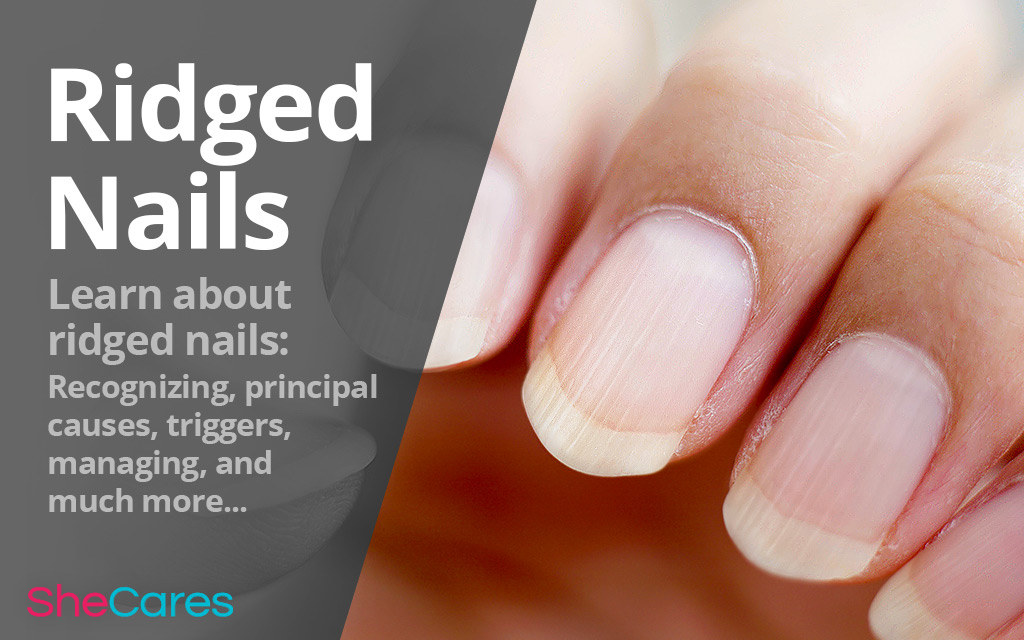For many women, keeping nails happy and healthy is an important part of keeping their appearance neat and tidy. This is why nail problems can be such a frustrating issue. Nail ridges, while not as visible as some other nail problems, are still one condition that many women deal with on a daily basis. This can be an annoying problem, but understanding what has triggered the nail ridges can help determine what to do for ridged nails.
Recognizing Ridged Nails
Four types of nail problems are common among women: weak or brittle nails, splitting or peeling nails, cracked nails, and ridged nails. Ridges on fingernails are bumps or raised lines that appear on fingernails and usually run along the length of the nail. They can be either vertical or horizontal.
Hormonal Causes
Hormone fluctuations are a common reason for nail problems. Estrogen plays many roles in the body, and studies have shown that drops in estrogen levels can change how nails grow.
Other Causes
Several long-term, underlying conditions may be the reason for fingernail problems like vertical ridges, which run from the nail bed up to the white tips of the nails.
Nutrient deficiency
Without enough of nutrients like iron, calcium, vitamin E, biotin, and others, the body cannot build nails with the proper shape or strength.
Growing older
It is also common for vertical nail ridges to occur as a normal result of aging, and this is the most likely cause in most cases. This can begin at any age, as nail growth changes significantly after puberty and continues to change throughout the years.
Horizontal nail ridges, on the other hand, may be an indicator of a more serious problem. Certain diseases can cause horizontal nail ridging, so those who experience this type of ridge should seek medical advice.
Triggers
Aside from underlying conditions, nails can be damaged because of other events or activities that cause more sudden damage to the nail. These can cause damage even without the added stress of an underlying cause, but they are more likely to be a bigger problem when the nail is already suffering.
Trauma to the nail
The most likely trigger for ridged nails is trauma to the nail. This can be caused by hard work done with the hands, such as yard work or other hard labor that might cause stress or slightly higher than normal wear and tear on the fingernails. It could also be due to an injury of the hand that has affected the nail, especially the nail bed. When the nail bed is affected, the new nail will begin to grow in damaged.
Damaging the cuticles
These ridges may also be caused by damaging the cuticles. Cuticles are important in nail health, especially in keeping the bottoms of the nail - where the nail bed begins - safe from infection and from losing moisture. When cuticles are damaged, either by accident or by being trimmed on purpose, it can cause problems for the nails. Often, nails may grow in a bit misshapen because of this damage, and ridges are a common issue as well.
Managing Ridged Nails
One of the best ways to manage and prevent ridged nails is to avoid hard work if possible. Stress and physical trauma to the nail can be prevented by not performing any physically difficult tasks with one's hands. However, this may not be feasible for many people, so protective measures like gloves should be used to minimize the damage done.
Additionally, in order to prevent damage, cuticles should never be cut. Cuticles naturally protect the nail, so keeping cuticles healthy can help to keep the nail healthy overall. Cutting cuticles is always bad, despite what manicurists may tell you, and even pushing them back may cause damage over time.
While these management methods can help to prevent nail ridges, it may also be useful to investigate home remedies for nail problems in order to discover other ways to treat nail ridges and their underlying causes.
Sources
Better Health. (2013). Nails – fingernail and toenail problems. Retrieved April 26, 2017, from https://www.betterhealth.vic.gov.au/health/conditionsandtreatments/nails-fingernail-and-toenail-problems
National Institutes of Health. (2015). Nail abnormalities. Retrieved April 26, 2017, from https://www.nlm.nih.gov/medlineplus/ency/article/003247.htm
Singal, A. & Arora, R. (2015). Nail as a window of systemic diseases. Indian Dermatology Online Journal, 6(2), 67-74. Retrieved from https://www.ncbi.nlm.nih.gov/pmc/articles/PMC4375768/
